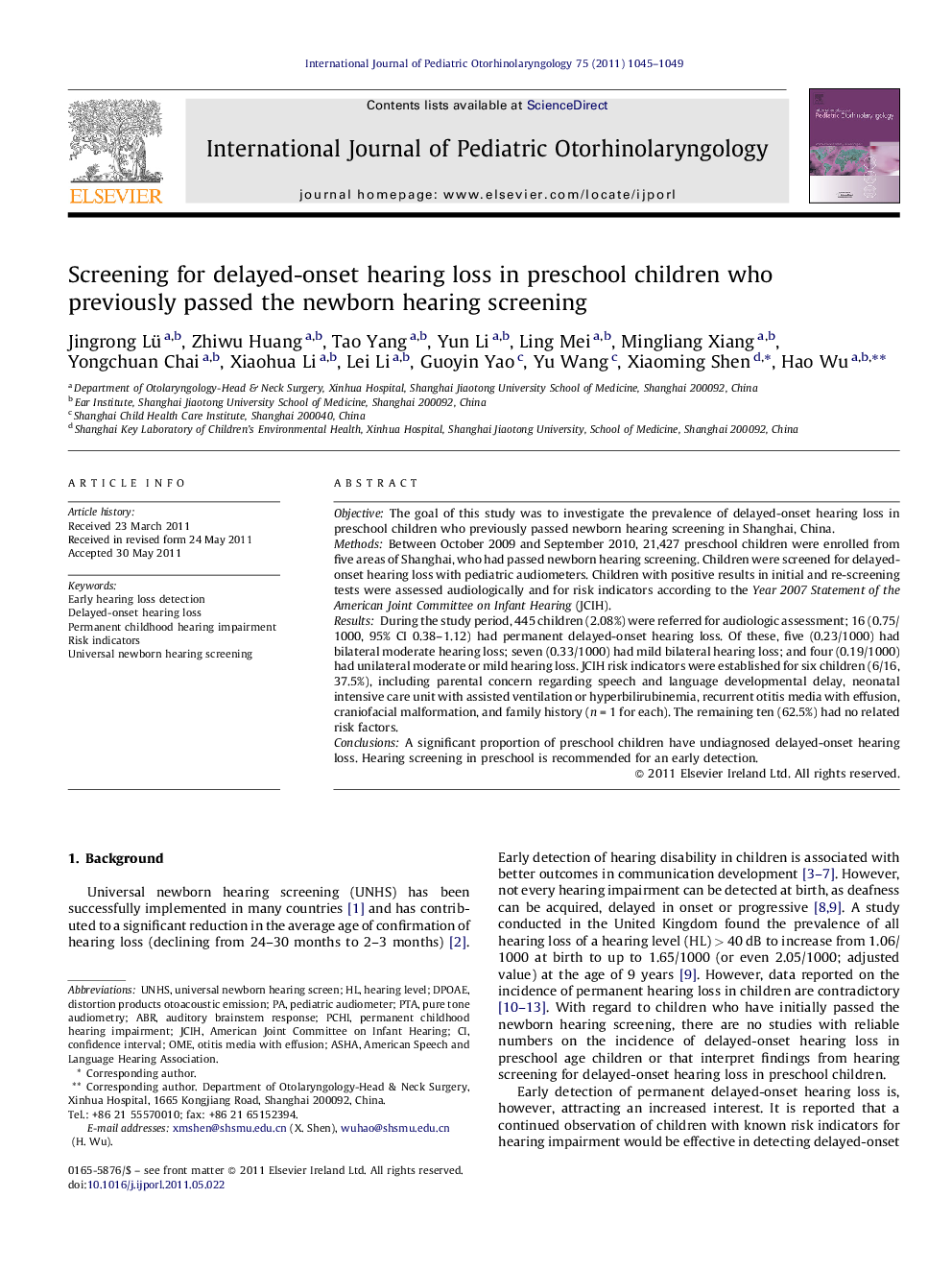| Article ID | Journal | Published Year | Pages | File Type |
|---|---|---|---|---|
| 4113554 | International Journal of Pediatric Otorhinolaryngology | 2011 | 5 Pages |
ObjectiveThe goal of this study was to investigate the prevalence of delayed-onset hearing loss in preschool children who previously passed newborn hearing screening in Shanghai, China.MethodsBetween October 2009 and September 2010, 21,427 preschool children were enrolled from five areas of Shanghai, who had passed newborn hearing screening. Children were screened for delayed-onset hearing loss with pediatric audiometers. Children with positive results in initial and re-screening tests were assessed audiologically and for risk indicators according to the Year 2007 Statement of the American Joint Committee on Infant Hearing (JCIH).ResultsDuring the study period, 445 children (2.08%) were referred for audiologic assessment; 16 (0.75/1000, 95% CI 0.38–1.12) had permanent delayed-onset hearing loss. Of these, five (0.23/1000) had bilateral moderate hearing loss; seven (0.33/1000) had mild bilateral hearing loss; and four (0.19/1000) had unilateral moderate or mild hearing loss. JCIH risk indicators were established for six children (6/16, 37.5%), including parental concern regarding speech and language developmental delay, neonatal intensive care unit with assisted ventilation or hyperbilirubinemia, recurrent otitis media with effusion, craniofacial malformation, and family history (n = 1 for each). The remaining ten (62.5%) had no related risk factors.ConclusionsA significant proportion of preschool children have undiagnosed delayed-onset hearing loss. Hearing screening in preschool is recommended for an early detection.
